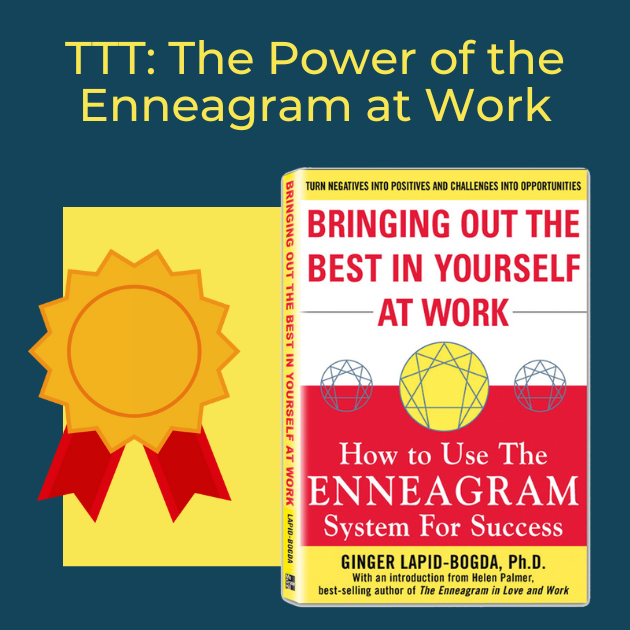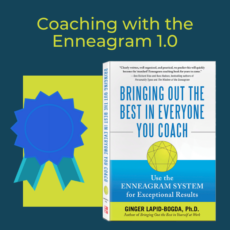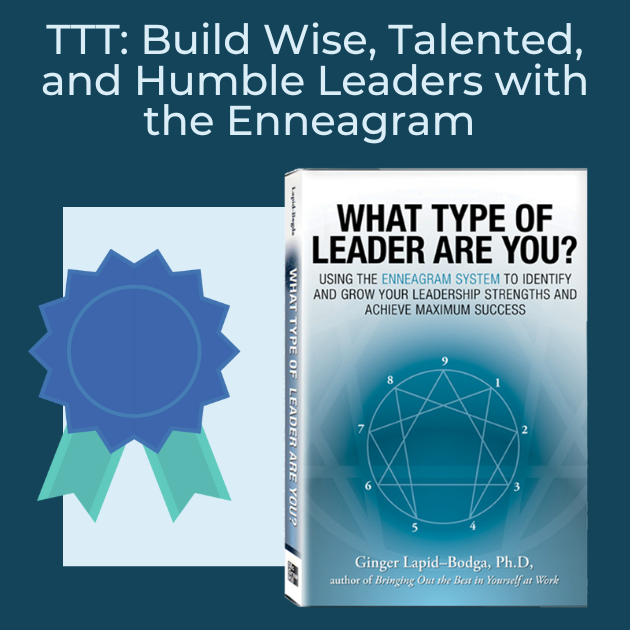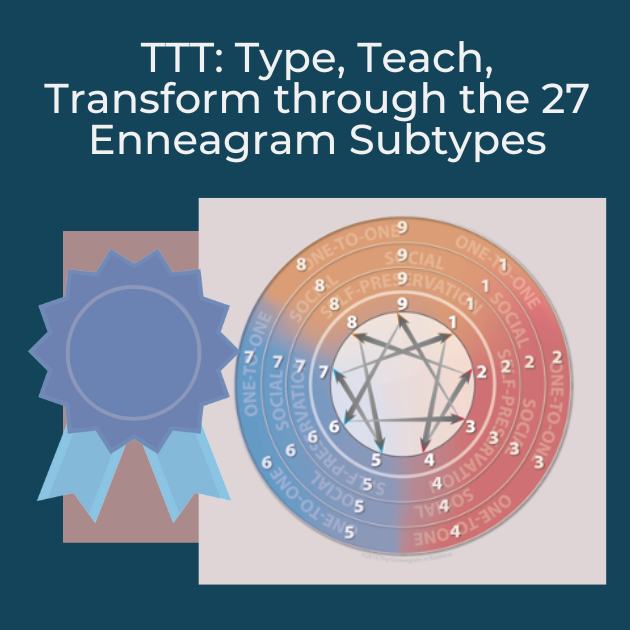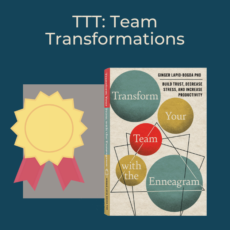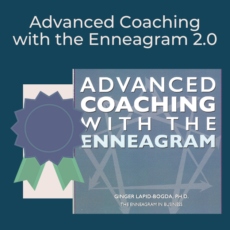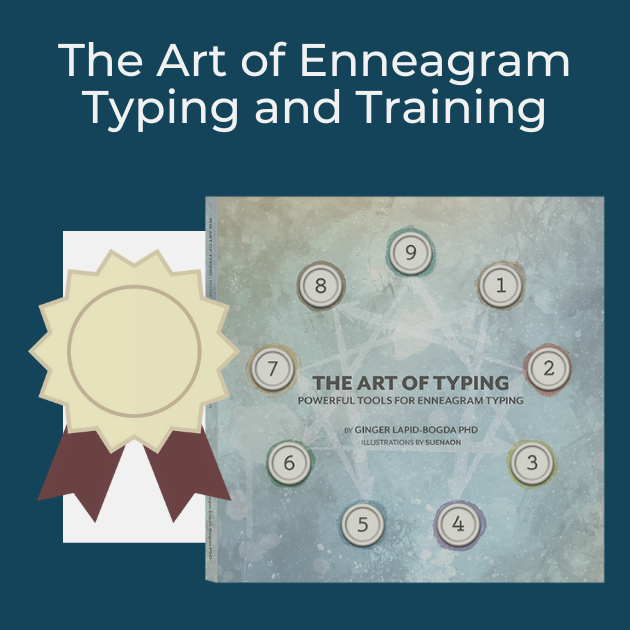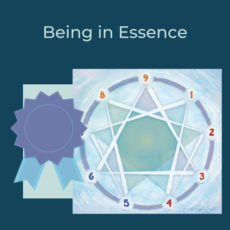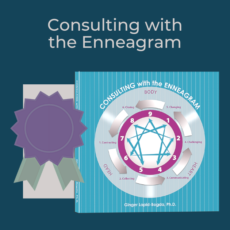All certificate programs can be used for IEA-accredited professional contact hours.
All coaching programs can be used for ICF credit hours as well as IEA teacher accreditation hours.
-
Program overview
How can you effectively train and consult with organizations, enabling them to create sustainability and achieve positive results using the Enneagram? “The Power of the Enneagram at Work,” based on Bringing Out the Best in Yourself at Work, gives you first-hand experience and detailed activities to bring the Enneagram to life in organizations via the most important and frequently used business applications of the Enneagram: communication, conflict, feedback, teams, leadership, and coaching. By integrating the Enneagram with time-tested models from the behavioral sciences and leadership development, you’ll learn high-impact activities that make the Enneagram come to life!
With over 30 activities described in detail and complete with PowerPoint slides and participant handouts, you’ll engage, learn, and practice designing and leading your own original activities. Along with a 142-page Trainer’s Guide and accompanying thumb drive containing colorful PowerPoint slides, you’ll also receive a set of companion training tools for the program and a certificate of completion. This program provides 58 IEA accredited professional contact hours.
While you don’t need to be an expert in the Enneagram, training, consulting, HR, managing, or coaching to attend, it is helpful to have some background in one of the above-mentioned areas in order to ground your learning.
View in storeDetailed description
Program Overview
The Train-the-Trainer “The Power of the Enneagram at Work” based on Bringing Out the Best in Yourself at Work is highly interactive as participants engage in many of the hands-on activities in the elaborate Trainer’s Guide. Learning by doing is a core foundation of this program as you experience the 9 Enneagram types come alive in these foundational activities!Typing
While it essential to remember that it is not the trainer or consultant’s job to type another person, it is our role to teach the system and guide participants in our program to discover (uncover) their own Enneagram type. This program teaches you how to do this in a group setting – using Typing Cards and other materials – and the typing process also applies in a 1-1 setting.Communication
Because this is the most commonly used Enneagram application in business settings, the applications section of the program begins here, with multiple activities to help others understand their type better and to enhance their communication skills in the process. The focus is on speaking style, body language, blind spots, and distorting filters when listening.Feedback
Feedback is the most underutilized skill in organizations today! Many companies provide skill-based job training and rewards systems when the real issue is that people do not get enough honest feedback, both positive and constructive. In this section of the program, you’ll learn how to teach the art of giving feedback and the following “how tos”: type-based strengths in giving feedback, type-based common feedback errors, and how to adjust feedback to the 9 types for optimal impact.Conflict
Most people prefer to not engage in conflict, yet conflict exists in almost all relationships. With too much unresolved conflict, relationships and work suffer. With too little conflict, either people are not being forthcoming or relationships and work loose their vitality. In this section, you’ll learn to understand and work with conflict from an entirely new perspective, one that makes conflict productive for organizations and a source of deep development for individuals. Why? Both the issues that cause us to react negatively and how we deal with these reactions are a result of our Enneagram type. As a result, conflict becomes a fertile source for our own personal and professional development.Leadership
Leadership style is a direct outgrowth of Enneagram type, and the Enneagram is a premier approach to help leaders identify their predictable strengths and derailers (development areas), as well as their paths for growth. Based on leadership paradigms and paradigm shifts, this section of the program is an easy-to-use and understandable way to help leaders dramatically develop.Teams
This program has a major focus on using the Enneagram to understand individual behavior and team dynamics, and then to use this insight for individual growth and the creation of high performing teams. We use team goals and interdependence, team roles, and the four stages of team development (forming, storming, norming, and performing), all integrated with the Enneagram.Coaching
This section focuses on the Enneagram and intuitive coaching as a way to access our inner resource as coaches.Transformation
You’ll learn multiple transformational activities for your own self-development, but also for use with your leadership clients. These activities work very effectively in organizational settings.Program schedule at a glance…
Day 1
Program Overview
Training Design
Enneagram System and Typing
Project TeamsDay 2
Enneagram Communication
Enneagram Feedback
Project TeamsDay 3
Enneagram Conflict
Enneagram Leadership
Project TeamsDay 4
Organization Development
Enneagram Teams
Project TeamsDay 5
Enneagram Coaching
Transformation
Project TeamsDay 6
27 Enneagram Subtypes
Ethics and Marketing
Project Team Presentations
Closing and Certificates -
Program overview
VIRTUAL PROGRAM | In this 6-session certificate program, you’ll build your Enneagram and coaching knowledge and skills, experience the Enneagram as it comes alive in coaching, engage in your own self-development, and receive 50 Level 1 ICF credits and a coaching certificate from The Enneagram in Business.
The Enneagram, a powerful and profound ancient system with modern applications, is more than a coaching tool; it is actually a map to help coaches understand the 9 distinct versions of the human character, each with its own worldview, motivational structure, and patterns of thinking, feeling, and behaving.
In addition, the Enneagram is a developmental superhighway, with growth and transformation activities specifically tailored to each of the 9 Enneagram types, both personal and professional. This helps coaches guide those they coach to take targeted development actions that achieve deeper and more sustainable results.
Throughout this program, coaches also use the Enneagram for their own growth and skill enhancement. The best coaches have long recognized that their own self-mastery and professional skill sets directly affect the progress of those they coach, and that from every coaching experience, the coach usually learns and grows as much as the client.
In this program based on Bringing Out the Best in Everyone You Coach, the Enneagram framework is fully integrated with dynamic coaching methodologies and well-chosen, transformative coaching techniques that allows you to take your coaching to new heights of impact and new depths of discovery.
This program is taught in English unless otherwise specified.
VIRTUAL PROGRAM | 6 virtual sessions spread over two weeks, with robust pre-work and post-work required. The program overview and detailed program descriptions below are for the in-person programs. A full description of the virtual program can be found as a download in our store. This program provides 60 IEA accredited professional contact hours.
View in storeDetailed description
Program Overview
“Coaching with the Enneagram 1.0” is based on multiple perspectives to coaching: coaching methodology, coaching techniques, Enneagram knowledge and skills, coaching practice with feedback, and ample self-development. And while expertise, experience, and skills matter, what matters just as much is the character and qualities of the person doing the coaching. This includes their humanness, authenticity, level of self-mastery, centeredness, clarity about their motivations for wanting to coach, their ability to listen without judgment, and factors such as presence, being able to be in divided attention where they are fully attentive to more than one thing, and more.Coach Self-Development
During the program, everyone is both a coach and a client. This is true each day, as participants practice their just learned knowledge and skills in multiple mini-skill practice pairs that occur throughout. At the end of each day, participants also engage in Peer Coaching trios who coach one another in the same trios throughout the week for a more intensive coaching experience. Being coached is just as beneficial as being the coach for several reasons: (1) it is an opportunity for your growth as a person and a coach, and (2) it gives you a first-hand experience of being in the client role.There are other self-development opportunities interspersed in the program: multiple centering activities for you to experience and use for yourself daily or right before you go into a coaching session, type group work, and small group work.
Coaching Knowledge
This program contains a great deal of cognitive and theory input, and these content areas are always combined with information and skill-practice that allow you to put the cognitive learning into action.You’ll learn about coaching frameworks, coaching processes, and how to choose which approach is best for you and your client. Even more, you’ll learn about how to assess a client’s level of self-mastery within their Enneagram type and why certain approaches work best with the different levels of mastery. Every skill and technique used in the program is theory-based, so you’ll also learn why these work and when to use them.
Coaching Skills
The skills taught include time for practice with feedback, and the Peer Coaching trios at day’s end provide a time to utilize the day’s techniques. The Peer Coaching involves 3 individuals involved in 3 rounds of coaching; in each round, one person is the coach, the other is the client, and the third person is the observer, who offers feedback after the coaching interaction.Coaching Techniques
Great techniques used at the right time can make a huge difference in the depth and acceleration of the coaching experience. However, the best technique is for the coach to appear not to be using any, even though excellent coaches are highly trained and use a variety of techniques. A fine musician knows the scales and has mastered technique, but they appear to be playing without effort. Similarly, a skilled coach who knows how to be centered and in presence functions like a fine artist.This program is not about technique, it is about coaching excellence with the Enneagram. You’ll learn 20+ techniques, but you’ll also learn when and how to use them. The program techniques are drawn from a variety of disciplines: Gestalt awareness, Neuro-Linguistic Programming (NLP), psychotherapeutic models, visioning, Enneagram theory, and more. Often less (technique) is more in terms of positive impact.
Program schedule at a glance…
SESSION 1 (includes pre-and post-work)
Program overview and introductions
Enneagram type and typing clients one-on-one
Building rapport with clients
Coaching individuals of each typeSESSION 2 (includes pre-and post-work)
Coaching competencies and coaching models
Coaching to client’s self-mastery level and type
Head Center coaching techniques
Heart Center coaching techniques
Body Center coaching techniques
Peer coachingSESSION 3 (includes pre-and post-work)
Coaching and defense mechanisms
Coaching to clarify action
Type-based paradoxes and coaching
Peer coachingSESSION 4 (includes pre-and post-work)
Gestalt -based coaching techniques
Voice work
Stories
Projection and polarities
Peer coachingSESSION 5 (includes pre-and post-work)
27 Enneagram subtypes
Metaphor
Enneagram type-based searches and avoidances
Peer coachingSESSION 6 (includes pre-and post-work)
Development from the Head, Heart and Body
Transformational coaching
Peer coaching conclusion
Coach developmentUpcoming programs
Location
Start Date
Price
VIRTUAL
July 8 – 19, 2024
$1,900
-
Program overview
In this 6-session program, you’ll learn how to design and deliver state-of-the-art leadership development programs based on a comprehensive Trainer’s Guide that includes 50+ detailed activities, plus PowerPoint slides, participant handouts, musical slide shows, fabric banners, simulations, and a complete set of leadership training tools. You’ll also receive a certificate from the Enneagram in Business.
During the program, you’ll learn two distinct ways of training leaders to develop leadership skills with the Enneagram: (1) an experiential, dynamic and high-engagement approach for use with leadership groups of varying sizes that builds skill, enhances self-mastery, and generates energy, and (2) a Learning Community model, an innovative approach that was pioneered at Genentech that can literally transform the leadership culture.
Organizations across the globe are experiencing a leadership shortage, so it is not a surprise that leadership is one of the 3 most frequently used applications of the Enneagram. Based on What Type of Leader Are You?, “Build Wise, Talented, and Humble Leaders with the Enneagram” shows you how to use the Enneagram to develop the 7 most important competencies for today’s leaders: Drive for Results; Strive for Self-Mastery; Know the Business: Think and Act Strategically; Become an Excellent Communicator; Lead High-Performing Teams; Make Optimal Decisions; and Take Charge of Change.
Come prepared to engage in the training activities, but also to facilitate sessions, complete with feedback, and to participate in project teams where you will design and lead original leadership development exercises.
This program provides 58 IEA accredited professional contact hours.
View in storeDetailed description
Program Overview
The Train-the-Trainer “Build Wise, Talented, and Humble Leaders with the Enneagram” based on What Type of Leader Are You? is highly interactive, competency and feedback based, and elegantly intertwines both leadership and Enneagram theory and practice. A powerful way to develop leaders, the 190-page Trainer’s Guide provides a detailed description of exactly how to facilitate more than 50 different leadership development activities.Enneagram Learning Communities
Each participant is a member of an Enneagram Learning Community for the entire week, a small learning group that explores each leadership competency, shares how it relates to his or her Enneagram type, and learns self-development approaches to enhance capability in this area. Each participant leads one or more Learning Communities!Large Group Exercises
Every leadership competency section also includes dynamic, larger group activities that illuminate the specific competency and the particular way in which leaders of each Enneagram type have related strengths, development areas, and unique development paths.Leverage Your Leadership
This section covers general leadership style as an outgrowth of a leader’s Enneagram type, complete with slide shows and case studies.Drive for Results
This competency highlights the importance of focusing on more than just the end results, because then it might be too late: setting direction, creating plans, assigning work, establishing clear expectations with measurements and rewards, evaluating results at key milestones, and providing overall stewardship also matter.Strive for Self-Mastery
Self-mastery is central to all other leadership competencies. But what does it mean? Leaders explore the 6 dimensions of self-mastery – from self-awareness to personality integration – through dialogue, support, and self-development.Know the Business: Think & Act Strategically
Every organizational leader must know the business and think like a strategist in this constantly changing business world. Some do it naturally, others must learn it, but all leaders can use the Enneagram to master the 11 components of this competency.Become an Excellent Communicator
All leaders must do this effectively every day, with individuals and in groups both large and small. This practical competence shows leaders how to create genuine relationships. communicate clearly, listen fully, manage conflict and give feedback, and how to enhance their influence.Lead High-Performing Teams
This program has a strong team emphasis, both through the use of a high-performing team competency model that covers products and services, culture, leadership, vision, talent architecture and processes, but also through an in-depth assessment of the project teams within the program.Make Optimal Decisions
Learn how to access more fully the Head, Heart, and Body Centers of Intelligence in order to make wise decisions, but in the context of the organization’s culture, authority-making structure, and the specific contextual requirements of the decision itself.Take Charge of Change
Change has become a way of life for leaders: constant, chronic, and continuous change. Leaders have to do more than manage change, they must be change leaders, but also make certain that ongoing business needs are well met. This competency shows leaders how to do that using the Enneagram as their guide.Stretch Your Leadership Paradigms
Rather than leaders having to grow when they are under pressure and stress, the Enneagram can help them engage in targeted-development activities on an ongoing basis. This sets up a leadership culture of strategic leadership excellence and growth.Program schedule at a glance…
Session 1
Program Overview
Core Trainer Competencies
Enneagram System and Typing
Learning Communities
Project TeamsSession 2
Learning Communities and Large Group Exercises
Leverage Your Leadership
Drive for Results
Project TeamsSession 3
Learning Communities and Large Group Exercises
Strive for Self-Mastery
Know the Business: Think and Act Strategically
Project TeamsSession 4
Learning Communities and Large Group Exercises
Become an Excellent Communicator
Lead High-Performing Teams
Project TeamsSession 5
Learning Communities and Large Group Exercises
Make Optimal Decisions
Take Charge of Change
Project TeamsSession 6
The 27 Enneagram Subtypes
Learning Communities
Stretch Your Leadership Paradigms
Project Team PresentationsUpcoming programs
Location
Start Date
Price
VIRTUAL
June 3 – 14, 2024
$1,900
-
Program overview
In this 6-session program presented by Ginger Lapid-Bogda and Peter O’Hanrahan, you’ll explore the architecture of each Enneagram type as a context for subtypes and immerse yourself in in-depth subtype knowledge. You’ll practice teaching subtypes, give examples of subtypes in action, use subtypes in the typing process, and more. There will be ample opportunity to ask all your questions and receive supportive, constructive feedback on your teaching and typing.
This program is designed for coaches, trainers and consultants, as long as you know the Enneagram system, your own type, and the other 8 types reasonably well. All program materials are included in the registration fee: Mini-books on subtypes, PowerPoint slides, hard copy and virtual training tools, 1-year subscription to Enneagram Learning Portal.
Come prepared to increase your subtype skills and learn real-world subtype applications to typing, personal and professional growth, leadership, relationships, teams, and more.
View in storeDetailed description
Overall Program Orientation
This program enhances your subtype knowledge and skills in using this important aspect of the Enneagram in your teaching. There is also practice with helpful feedback.
Session 1 | Program overview
Session 1 sets the framework and content for the program, starting with why we are doing a subtype program and what makes the instinctual subtypes so important. To that end, we will create a common subtype language, illuminate the key elements or structure of what type really is, and then dive into the instincts and subtype theory and practice.
Session 2 | Teaching the Enneagram and typing using subtypes
If you teach subtypes too early, people get confused. If you don’t know subtypes or don’t use subtypes at all, you might unintentionally confuse or mislead people by giving examples of a type that go with one subtype that leave out the other two subtypes. You might also unintentionally mistype people by not being knowledgeable about the subtypes because some subtypes may look more like another type than the actual type of the person. That’s why this session goes more deeply into subtypes and then to subtypes as they relate to accurate teaching and typing.
Session 3 | Teaching subtypes specifically and their applications
How much or how little do you teach and when? How much do you need to know in order to teach subtypes as the relate to specific applications? How do you teach subtypes so you don’t have to have all the answers, but allow those you teach to get enough from you to identify their subtypes themselves. Hint: it’s not all through lecture!
Session 4 | More subtype-based applications
In addition to relationships and conflict applications of subtypes from session 3, this session focuses on applications to leadership, teams, and professional development.
Session 5 | Subtypes for deeper development work
When going even deeper into subtype work (beyond the most important applications) and into deeper personal development, participants need to know more about subtypes, so you also need to know more. This session covers it all! You’ll get perspectives and activities you can use directly with clients.
Session 6 | Transformative subtype work
This session focuses on transformative subtype work you can do with individuals and in groups. You will learn about somatic shifts, catalytic conversions, and more.
CLEARING UP CONFUSIONS
Sometimes learning about subtypes creates more confusion than clarity. And if you’re confused, your clients will also be perplexed. Do you think you know everything about subtypes and have no confusion whatsoever? Realistically, we’re all learning and evolving our understanding, so there is always more to learn and clarify. Can you have more than one subtype? Can you be a type but not relate to any of its three subtypes? Can you relate to all three subtypes, and does this matter?
What is the difference between instincts and subtypes? What actually is a counter-type? Why are counter-types important, or are they? Are subtypes more important than type? What are the best names to use for instincts? What words do we use for the 9 emotional habits (“passions”)? What are the best names to use for each of the subtypes?
How can you remember all you need to know about the 27 different subtypes? What is most important to know? How do you learn more?
We’ll address all these questions.
Come find out!
Program schedule at a glance…
SESSION ONE
Introductions
Why teach subtypes?
Why subtypes are such an important topic
Creating a common subtype language
The Enneagram architecture
Subtype immersionSESSION TWO
Q&A
Subtype immersion continued…
Teaching type without subtype bias
Typing individuals in the context of subtypes
What wings and arrows have to do with subtypesSESSION THREE
Teaching subtypes for applications
Subtype applications
Application: relationships
Application: conflictSESSION FOUR
Application: leadership
Application: teams
Application: professional developmentSESSION FIVE
Teaching subtypes for deeper work
Personal development
Subtype specific developmentSESSION SIX
Deep transformational work with subtypes
Somatics
Catalytic conversions and transformation
Closing and certificates -
Program overview
In this program, you’ll learn how to create great teams, whatever their size or industry, no matter if the team meets in-person, remotely or is a hybrid. It is designed for coaches, trainers. consultants, team leaders or members, as long as you know the Enneagram, your type and have some prior experience working with or in teams. Program materials include a pre-publication copy of Ginger’s newest book on teams and the Enneagram, PowerPoint slides, 2 symbol maps (large for the floor; small for the wall), team-based training tools and 1-year subscription to Enneagram Learning Portal. This program provides 58 IEA accredited professional contact hours.
Come prepared to engage in the training activities, but also to work in project teams throughout the program to both create team-based resources you can use with teams and to analyze team stages and team dynamics.
This program increases both your skills and confidence working with teams and the Enneagram through theory, practice and first-hand team experiences. Teams are dynamic, as is the Enneagram, so the two combined offer an action-packed program.
View in storeDetailed description
Overall Program Orientation
This program increases both your skills and confidence working with teams and the Enneagram through theory, practice and first-hand team experiences. Teams are dynamic, as is the Enneagram, so the two combined offer an action-packed program.
Teams versus groups
You’ll learn about the importance of and skills involved in helping clients distinguish whether they are a group or a team and then, if they are a team, how can they accelerate their forward movement? For example, if they are a team, are they a ‘possible team,’ an ‘actual team’ or a ‘high-performing team?’
Stages of team development
Truly understanding the four-stage team development model and being skilled in guiding teams through this model is essential to helping teams become high-performing ones. The stages include: Forming, Storming, Norming and Performing. You may or may not already know this model, but this program takes the model to a whole new level.
Enneagram types on teams
The program is full of type-based team information at every step. There’s also a way to teach the types based on team. In addition, there’s an exploration of type behavior at each of the four stages of team development. And this is just a start.
Project teams
You’ll be working in project teams throughout the program to both create team-based resources you can use with teams and to analyze team stages and team dynamics. This is an essential and vibrant part of the program. Real people, real teams in real time!
Case studies
We’ll also be working with case studies of real teams to help you learn more about contracting with clients and developing a program for your clients that is practical, doable and high impact.
Team maps
Whether or not you’ve worked with or even led a team map process, this program gives the insights and confidence to do this with real teams. There are so many different ways to use the Enneagram symbol as a team map, many of which we do in the program itself. Come prepared to have your eyes opened and your capacity to facilitate team mapping grow exponentially.
Team Leadership
Not all leaders are effective team leaders, but all leaders need to learn how to do this. Why? Because it is a rare leader who doesn’t have a team depending on them to provide guidance, structure and various forms of leadership at different stages in the life of a team. This program will help leaders or guide those who help leaders become most effective at leading teams. Their Enneagram types provide great insights into how to do this.
Process Enneagram
Most people who currently use the Enneagram in organizational applications work with the 9 types, which is the modern Enneagram that began with Oscar Ichazo, through Claudio Naranjo and up to its current usage. This Enneagram is often referred to as the Enneagram of personality, although it more the Enneagram of the 9 ego structures.
Prior to Ichazo, there is a vast array of Enneagram knowledge based on the work of George Gurdjieff and those who followed after him. One of these is called the Process Enneagram, which also has several meanings. A core difference with the Process Enneagram is that it does not focus on types, but uses the whole Enneagram symbol as a map of process. This distinction will be made clear in the program and is a shift of perspective if you want to use the Enneagram as a process and not a typology.
We’ll be working with the Process Enneagram, based on the work of Richard Knowles, applying his concepts to contracting with clients to see Enneagram work is wanted and useful. We’ll also look at how to use this process with designing and improving teams.
Program schedule at a glance (virtual)…
Session One
Program overview
Introductions
What is a team versus what is a group?
Stages of team development
Types on teams
Project teamsSession Two
Team deliverables
Team assessments
Project teamsSession Three
Team deliverables
Team assessments
Project teamsSession Four
Case studies
Team maps (centers-based)
Project teamsSession Five
Case studies
Team maps (optimistic, competency and intensity trios; subtypes)
Maps for team problem solving
Project teamsSession Six
Case studies
Leadership
Process enneagram for client intake
Process enneagram for client teamwork
Closing and certificatesProgram schedule at a glance (in-person)…
Session One
Program overview
Introductions
What is a team versus what is a group?
Stages of team development
Types on teams
Project teamsSession Two
Project teams
Team deliverables (1)
Team assessments
Team deliverables (2)
Team assessmentsSession Three
Project teams
Team deliverables (3)
Team assessments
Project teams
Case studiesSession Four
Team maps (centers-based)
Team maps (optimistic, competency and intensity trios; subtypes)
Maps for team problem solving
Team leadership
Process Enneagram
ClosingUpcoming programs
Location
Start Date
Price
VIRTUAL
September 9 – 20, 2024
$1,900
-
Program overview
“Advanced Coaching with the Enneagram 2.0” is a 5-session virtual certificate program designed to enable those who coach others to coach the whole person in context and is approved for 50 ICF Level 1 credits.
Based on the requirement that all participants are already familiar with core coaching theory and practice and know the Enneagram well and can integrate it into their coaching – both as a coach and for coaching aligned with their client’s enneatype – this program is based on the Coaching Circle.
Coaching Circle
The Coaching Circle is used in two ways. The overarching use of the Coaching Circle is for coaches to continuously employ the four core modes of coaching behavior: Listening, Questioning, Feedback, and Challenging. These four areas are utilized throughout the program, focusing first on the client as a whole person with integrated systems of thought patterns, feeling responses, and behavioral habits. Second, Coaching Circles are used as a foundation for group (team) coaching.Mental Map Coaching
In the program, coaches pursue an in-depth understanding of the mental maps of clients by enneatype and learn how to illuminate and challenge these mental models in service of the client’s growth.Emotional Literacy Coaching
Next, coaches focus on how to coach clients to increase emotional literacy, creating awareness, openness, and expansiveness in clients of the nine enneatypes in order to strengthen and enrich their development.Somatic Coaching
Crucially important in coaching is how the body restrains us in ways that limit our ability to grow. Here, coaches learn how to work somatically with clients of each type and to create dramatic release and change.Integrative Coaching
In addition to integrating the mental, emotional, and somatic aspects of coaching, coaches also work with client enneatype-based transformations.Coaching Practice
Throughout the program, coaches engage in a variety of coaching practices with feedback from both clients and observers.This program provides 60 IEA accredited professional contact hours and is taught in English unless otherwise specified.
View in storeDetailed description
Program Overview
“Advanced Coaching with the Enneagram 2.0” is an intensive program that is open only to participants who have completed Ginger’s first program, “Coaching with the Enneagram 1.0,” or who have a strong Enneagram knowledge and are not new to the coaching profession. It is also expected that participants already use the Enneagram in their coaching practice.The program is based on the philosophy that coaching is a client-centered or client-focused experience in which the coach brings skills and knowledge in service of the client’s growth and transformation. This includes accessing all of themselves – head, heart, and mind; alignment with their intentions and values; and integration, which means the client needs to integrate all of their learning, including the somatic aspects of coaching. To this end, the coach needs to be on a continuous growth trajectory in which the coach also accesses all of her- or himself, is aligned and congruent, and is continuously working toward their own integration as a coach and as a person.
Although the basics of coaching are reviewed in this program – for example, what is coaching, coaching ethics, and the core skills of listening, questioning, feedback, and challenging clients through direct communication, the program goes deeply and broadly into sophisticated coaching knowledge of their client’s patterns of thinking, feeling and behaving, and nuanced skills in client-coach interactions, all using the Enneagram.
Each participant selects one deep coaching desire and, using the same desire throughout the week, engages with a variety of other participants (as coaches) in relation to this deep development desire. Because of this focus, the program helps all participants learn how to coach clients at a vertical (deep) as well as horizontal (practical) level and also go deeply into their own development as coaches.
Program schedule at a glance…
Session One | Overview and Mental Center Coaching
Program overview
What is coaching | ICF ethical standards
Contracting with clients | coaching agreements
The Coaching Circle
Coaching the client as a whole person
Identifying client’s deep development desires
Mental model coaching | changing deep assumptions
Coaching Circles | group coachingSession Two | Heart Center Coaching
Coaching from different Centers | head, heart, and body
Coaching Circle | heart-based coaching
How to coach to the heart of each enneatype
Heart-opening coaching practices
Speaking from the heart
Storytelling from the heart
Heart awareness assessment
Coaching Circles | group coachingSession Three | Body Center Coaching
Review of somatic coaching
Coaching Circle | body-based coaching
Reading body cues
Body-based release activities
Breath work and physical developmental activities
The Enneagram Map | embodying change
Coaching Circles | group coachingSession Four | Integrative Coaching
Mental transformation coaching
Emotional transformation coaching
Subtype transformation coachingSession Five | Integrative Practices
Coaching Circles
Group coaching
Coach development
CertificatesUpcoming programs
Location
Start Date
Price
VIRTUAL
April 29 – May 8, 2024
$1,900
-
Program overview
Deepen your knowledge, increase your intuition, and refine your skills in both typing and teaching with Ginger Lapid-Bogda, PhD
Enneagram Typing
Enneagram typing is simultaneously simple and complex. Learn how to assist others in discovering their Enneagram type and how to do this in an accurate and respectful way. Here’s what you’ll learn:
– The nuances of type and typing, avoiding both stereotyping and slotting people into boxes
– Accurately inferring another’s types based on what you are hearing, seeing and sensing
– Being able to effectively differentiate between different types
– Honoring the 3 centers of intelligence – Head, Heart and Gut – in the typing process
– Factoring in a person’s life circumstances and factors of diversity, without bias, as you guide another person to uncover their type
– Acting with humility as a guide rather than an expert, even if you have expertise
Enneagram Training
Being an excellent Enneagram teacher goes beyond knowing your content. How you deliver the content matters just as much. Here’s what you’ll get from the program:
– Beautiful PowerPoint slides
– Short videos of each type
– Guidance, practice and feedback using effective teaching stories
– Instruction and feedback on your teaching skills
– An array of different typing tools to use in your programs
View in storeDetailed description
Overall Program Orientation
Everyone who works with and teaches the Enneagram in any setting needs to know the system well, the types in detail, how to help people recognize their type or confirm their type, and how to teach the Enneagram effectively in various size groups. This is true even if you use a test to determine type because (a) tests are not always accurate and (b) if a test is accurate, people who take a test only know their own type, not the eight other Enneagram types. This program teaches you how to both help people get their types accurately identified and how to teach the Enneagram system and the 9 types accurately and effectively. It is part science and part art.
The Enneagram system
We cover the important components of the Enneagram system, show you how these all fit together as a system (which helps you understand and remember them), answer your questions about some of the most confusing Enneagram information you may have read or heard, and clarify what is important for you as a trainer to know versus what you should actually teach. People learning the Enneagram cannot absorb all the information all at once, nor do they respond favorably to what they might perceive as Enneagram jargon. We’ll also work with using language that is easily understood, but not overly-simplified.
The 9 Enneagram types
The 9 Enneagram types are not “personality” types as much as they are 9 different ego structures. Learn what comprises an ego structure and understand the 9 different versions, including worldviews, defense mechanisms, ego ideals (how each type wants to view themselves in their ideal state), fixations (habits of mind), passions (emotional reposes patterns, subtype variations and more.
The typing process
There is a science and an art to typing, and you will learn both. The science involves type-based content, as several methods or processes for accurate typing, and a mindset or orientation to connecting typing both on a 1-1 basis and in a group setting. The art of typing involves being able to synthesize multiple typing factors simultaneously, fine tuning your intuition, noticing what is expressed and not expressed, and more. You’ll also receive a variety of typing tools and learn how to use them effectively.
Enneagram training
You’ll learn the science (neuroscience and behavioral science) and the art (graphics, metaphor, story) of teaching the Enneagram with instruction and use of PowerPoint slides provided in the program. Even more, you’ll present to others and receive helpful feedback on your content and delivery.
The art of the story
Not everyone tells a good story. Even fewer people tell a short, “sticky” story. “Sticky” means memorable; teach the Enneagram so people remember what you teach and what they learn.
The result
The program’s intention and result is to increase your confidence and competence when you are teaching the Enneagram to individuals and groups and when you are guiding people to discover their types.. Confidence and competence are equally important. If you are confident but not competent, you may come across well to your audience but what people learn will be wrong. If you are competent but not confident, you may hold back and hesitate instead of moving forward with confidence and grace.
Program schedule at a glance…
Session One
Program overview
Introductions
Methods and principles of typing
Using tests | how-to and how-to-not
Architecture of the EnneagramSession Two
Nuances and additions
Verbal and non-verbal indicators
Wings and arrows
Culture
Family
Gender
Subtypes
Triads | optimistic, competency, and intensity triadsSession Three
Differentiating questions
Questions to confirm type
Centers of Intelligence and typingSession Four
In-depth typing nuances
1-1 typing interviews
Lucid probing
1-1 interview practiceSession Five
1-1 typing interviews in a group setting
Practice
Group typing with typing cards
Practice
Enneagram teaching greatnessSession Six
The many uses of story
Sticky story creation
PowerPoint and visuals
Teaching type practice and feedback
Closing and CertificatesUpcoming programs
Location
Start Date
Price
VIRTUAL
October 7 – 18, 2024
$1,900
-
Program overview
Uncover your shadow, embrace who you are, follow your dreams!
How do you describe a program that is deep, powerful, and self-reflecting, yet intriguing, comforting and hard to put into words? Have you ever explored your shadow without shame but with joy? What about putting your actual dreams on the Enneagram map to discover their fullest meaning? Have you ever been to a program that was both structured and also allowed you to do what you wanted in a fully emergent way?
You’ll go gently into the truest nature of your essence using the Enneagram as your guide combined with poems from the 13th-century Persian poet Rumi, music, creative art, symbols, dream work and somatics. And you’ll receive a large Enneagram symbol floor map to work with throughout the four days and to take with you when the program ends.
The ambience of this program is essential; some sessions will be inside, some outside, and there is group work, pair work, and individual work involved. A better word than “work” is “play” or “experiment.”
This program intentionally allows for emergence. In other words, there are definitely structured sessions that build upon one another, yet anyone at any time is totally free to step outside, take a walk, go into another room and use their map, or create something of art, just as examples.
To attend, you need to know your type and the Enneagram well.
This program is taught in English unless otherwise specified.
View in storeDetailed description
Program Overview
Day 1
In the first day, we will get to know ourselves and one another well, particularly the person behind the type-structure that masks our essence. We’ll also take a deep look at both our ancestral and spiritual origins, two aspects that have formed us into becoming who we truly are.Day 2
Day 2 brings us to examine our many shadow selves, the parts of us that we must see, acknowledge and “reown” if we are to be in essence. Some of these shadows we might label as negative, so we want to avoid them. Some we might think of as positive, yet be unaware that they lurk beneath the surface. Some just are…Day 3
On day 3, we’ll address all the questions that emerge about BEING IN ESSENCE, using a new, evocative Enneagram floor map as our guide, along with practices from the 3 Centers of Intelligence and activities that engage the whole brain.Day 4
Day 4 brings us to our essence and our ability to be in essence. Using the higher mental and emotional states of being for all 9 Enneagram type structures, we’ll take a journey along the wheel of the Enneagram map. No seat belts required! -
Program overview
In this robust, hands-on consulting experience that fully integrates the Enneagram with organizational consulting projects, you will work in real consulting teams with real clients who have organizational needs that the Enneagram, combined with other organizational technologies, can help address.
There is a vast difference between consulting, training, and coaching. Consultants work with the real issues of organizations and teams in real time. Trainers, by contrast, teach a predetermined body of knowledge, attitudes, and skills in public or organizational forums. Coaches work with individuals rather than teams, groups or organizations. Thus, the skill sets needed by trainers, coaches, and consultants are quite different.
Consulting with the Enneagram is an accelerated 5-day program open to two groups of people: (1) past participants of Enneagram in Business certification programs (a Train-the-Trainer or Coaching certificate program) or (2) individuals who have a good understanding of the Enneagram and at least some experience training or consulting with organizations.
For trainers and coaches, as well as consultants, it is a sophisticated, multi-leveled way of learning how to use the Enneagram in organizations from start to finish. Perhaps the best way to grasp the complexities and subtleties of Consulting with the Enneagram is in the words of past participants:
“The program is a must for both new and experienced consultants to improve both their skills and the quality of their work. It encourages participants who might be tempted to acquire these complex skills quickly to learn an elegant yet efficient and effective methodology, as well as to gain first-hand experience in consulting.”
“It is like three excellent workshops in one: (1) the consulting process into easy-to-understand-and-implement building blocks; (2) the application of consulting and the Enneagram to real-world issues; and (3) working with a team of masters.”
View in storeDetailed description
What is consulting?
Consulting is a process by which an individual/group provides guidance to an organization to better achieve its goals.There are many kinds of consultants, most commonly the following: Expert (engages in action the client can’t or won’t do for themselves); Pair of Hands (implements tactics designed by the organization); Collaborator (focuses on how client approaches issues; supports client’s identification of optimal solutions); and Process Consultant (focuses on how client approaches intra- and interpersonal issues as well as other organizational processes).
An OD (organization development) consultant is a combination Collaborator and Process Consultant. The field of OD grew out the early work of National Training Laboratories Institute (NTL) in 1947 and is based on a methodology called Action Research. OD became a full-fledged profession in the 1960s.
What is OD?
“OD … is an organizational improvement strategy that uses behavioral science principles and practices to improve individual and organizational effectiveness.” – French, Bell & Zawacki, 2000What is action research?
“The key aspects of the model are diagnosis, data gathering, feedback to the client group, data discussion and work by the client group, action planning, and action. The sequence tends to be cyclical, with the focus on new or advanced problems as the client group learns to work more effectively together.” – French & Bell, 1999Why all professionals working in organizations need consulting skills!
Anyone can get a business card and then call themselves a consultant. But what distinguishes mediocre from good (or good from great) is the consultant (or trainer) who has excellent consulting skills. Their organizational efforts are more successful, they do no harm, and they enjoy themselves more because they don’t make mistakes that are stressful and costly. Even experienced consultants make unnecessary beginner’s mistakes; they may have the experience, but they don’t understand the consulting process or have refined consulting skills.How the Enneagram integrates with OD consulting:
OD and the Enneagram have a similar values base
Quality of life – enhancing whole life experience
Health, human potentiality, empowerment, growth, excellence
Freedom and responsibility
Authenticity and openness in relationshipsThe Enneagram improves the client relationship
Consultants can know precisely how to develop client rapport and provide client support, and also to help clients step into visible, constructive leadership.OD provides a consulting methodology that works
The OD consulting process and related consulting skills are clear, practical, learnable, and invaluable. Although no consulting methodology is effective 100% of the time, an OD approach is time-tested and applicable to all organizations and industries. The Enneagram even enhances results at each stage of consulting: entry and contracting, data collecting and analysis, communicating the data, challenging the client to take action, changing what needs changing, and closing the client-consulting relationship.The Enneagram enhances all change interventions
The Enneagram can be integrated with almost every change intervention. Even more, the Enneagram, leveraged as a systems change, can create cultural changes of major proportions.Working with real clients
From the set of participants in the program, three are selected (as long as they say “yes”) to also serve as clients in the program. Clients have an Enneagram-related need for which consultation is appropriate. “Clients” also participate as members of a consulting team.Program schedule at a glance…
Day 1 | Organization Development | Entry and contracting
What is OD? | action research
Model building | theory and practice
Consulting | process and stages
Clients | entry and contractingDay 2 | Data collection | Data analysis
Data collection methods
Developing questions
Interviewing | focus groups | surveys
Clients | data collection | data analysisDay 3 | Communicating the data | Challenging
Communication strategy
Communication deliverables
Challenge tactics
Clients | communicating data and challengingDay 4 | Changing
Intervention technologies
Intervention strategy
The architecture of change
Clients | changingDay 5 | Closing
Assessing results | balanced scorecard
Client | next steps
The best consulting interventions
Program celebration
We offer several certificate programs you may be interested in taking. Our two coaching programs are both ICF (International Coaching Federation) Level 1 accredited and each comes with 50 ICF credits toward an ICF coaching certificate and can also be used as CCE credits for ICF coaching certificate renewals. All programs are IEA (International Enneagram Association) accredited and come with credit hours toward IEA Enneagram Professional Accreditation.
I am a coach (or aspire to be), so which program should I choose?
Coaching with the Enneagram 1.0 (based on “Bringing Out the Best in Everyone You Coach”) fully integrates coaching and the Enneagram. It is a dynamic, highly experiential program for people who either are coaches already or who know the Enneagram and want to become coaches. In addition, it works extremely well for experienced coaches who already know the Enneagram and comes with ample hands-on materials to use with your coaching clients. (50 ICF Level 1 or CCE credits and 60 credits toward IEA Enneagram Professional Accreditation)
Advanced Coaching with the Enneagram 2.0 is a deep dive into coaching with the Enneagram and is designed for past participants of Coaching with the Enneagram 1.0 or coaches with at least three years of full-time coaching integrated with the Enneagram and who know the Enneagram system and their own type well. What you learn from this program, along with the materials you’ll receive, will have a profound impact on your clients. (50 ICF Level 1 or CCE credits and 60 credits toward IEA Enneagram Professional Accreditation)
I want to learn more about how to provide Enneagram training to groups and teams in organizations or in public programs, so which program is best for me?
We offer three different Train-the-Trainer (TTT) programs, each one with a different focus. All TTTs come with beautiful PowerPoint slides, an abundance of training materials, and focus on theory, applications of the Enneagram, trainer skill building, and interactive training activities for you to use with clients. All include a typing component.
The core TTT, The Power of the Enneagram at Work (based on “Bringing Out the Best in Yourself at Work”), teaches you how to train others in the most important applications of the Enneagram: communication, feedback, conflict, leadership and teams. (58 credits toward IEA Enneagram Professional Accreditation)
The second TTT, Build Wise, Talented, and Humble Leaders with the Enneagram (based on “What Type of Leader Are You?”), focuses entirely on leadership development. It teaches you how to develop exemplary leaders through the Enneagram combined with specific leadership competencies: Drive for Results, Strive for Self-mastery, Lead High-performing Teams, Make Optimal Decisions, and more. (58 credits toward IEA Enneagram Professional Accreditation)
The third TTT, Team Transformations, (based on “Transform Your Team with the Enneagram”), and goes into depth showing you how to train and consult to groups and teams using the Enneagram integrated with team-based theory and practice. It also includes how to work with team leaders to optimize their performance and comes with PowerPoints and two Enneagram symbol maps, one for the wall and one for the floor. (58 credits toward IEA Enneagram Professional Accreditation)
What program teaches me skills in typing and teaching the Enneagram?
The Art of Enneagram Typing and Training (based on “The Art of Typing”) focuses on typing skills in depth and also teaches you how to teach the Enneagram systems and the 9 types. This program comes with PowerPoint slides, skill practice with feedback and teaches the art of telling stories as a teaching technique.
Do you offer a program that helps me go into a deeper understanding of my type and my own development?
Yes, Being in Essence is that program. It helps you examine your type, your shadow – please remember that “shadow” doesn’t refer only to negative qualities – and even helps you understand your type and development through using your dreams. Even more, you get a special Enneagram symbol floor map and opportunities galore to explore your essence on the map.
Is there a particular order in which I should take the programs?
No, there is not a particular sequence. All programs do need participants to have a basic familiarity with the Enneagram system and their own type. In addition, Coaching with the Enneagram 1.0 is usually taken before attending Advanced Coaching with the Enneagram 2.0.


